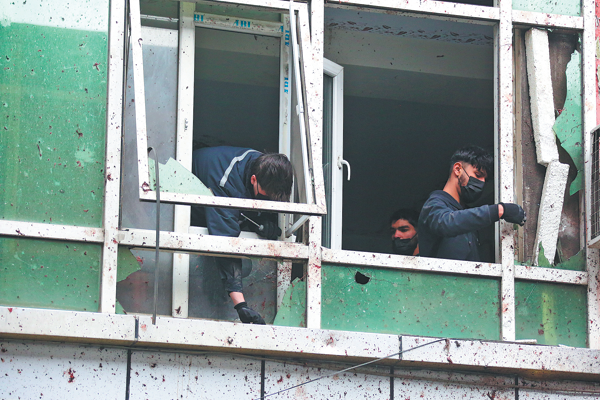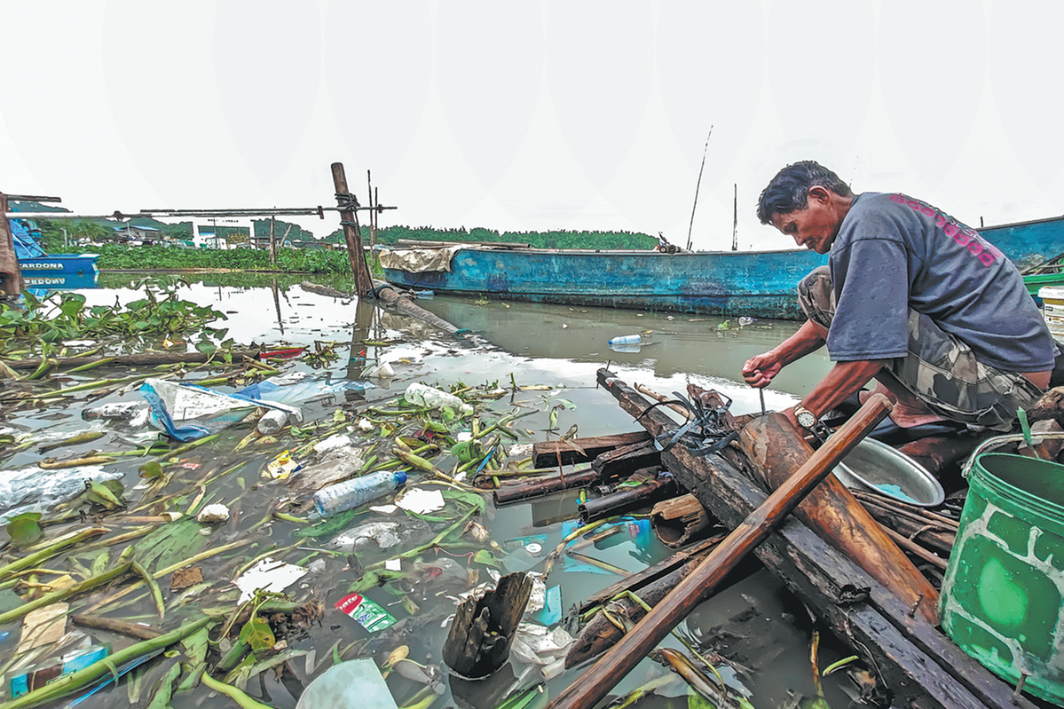Ukraine conflict spurring major shift in Japan's security policy, experts say

The Russia-Ukraine conflict has triggered a major shift in Japan's national security policy, turning its hitherto defense-only strategy into one that includes military expansion and counterstrike capabilities, experts said.
Japanese Prime Minister Fumio Kishida announced on Monday that the country will offer Ukraine fresh financial support worth $5.5 billion, Kyodo News reported. It has already provided Ukraine financial support worth $600 million, along with hundreds of millions of dollars worth of emergency humanitarian assistance, according to the prime minister's office.
Kishida also said he will host a video conference between the G7 leaders and Ukrainian President Volodymyr Zelensky on Friday, the anniversary of the Russia-Ukraine conflict. Japan is assuming this year's Group of Seven presidency.
In January, the Japanese prime minister visited five of the G7 nations — France, Italy, the United Kingdom, Canada and the United States — calling for a tougher stand against Russia. He said if a unilateral change to the status quo went unchallenged, the same would happen elsewhere.
Lyu Chao, director of the Institute of America and East Asia at Liaoning University in Shenyang, said that Kishida's trip was meant to clear the way for the US' Indo-Pacific Strategy. The Japanese prime minister also wanted European countries to intervene in the affairs of the Asia-Pacific.
Since the conflict began on Feb 24, 2022, Japan has taken the rare steps of sending defense equipment to Ukraine and offering refuge to those fleeing the conflict, Lyu said. The country has a pacifist postwar constitution, which limits its military capacity to ostensibly defensive measures.
In December, Japan released its three key national security strategy planning documents, namely an updated National Security Strategy, a National Defense Strategy and a Defense Build-up Plan. The conflict happened just as Japan was diving into the process of drafting these documents.
The three documents collectively put Japan on a path to acquire new military capabilities that have long been considered "taboo" in the domestic discourse on its national security policy, Lyu added.
Yuki Tatsumi, a senior fellow and co-director of East Asia Program at Stimson Center in the US, wrote in a blog that Tokyo's explicit interest in rehabilitating its indigenous defense industry and its commitment to essentially double its defense spending in the next five years are examples of how Japan is shattering its politically self-imposed constraints in its postwar national security policy.
In a commentary for the Center for Strategic and International Studies, Washington, Tsuneo Watanabe, a senior research fellow at the Sasakawa Peace Foundation, said that what is new about the three defense documents is that Japan's strategy is formulated based on the assumption that its territory could be subjected to a real military attack.
Among other changes, Tokyo has announced its intention to increase the nation's defense spending by nearly 60 percent over the next five years, abandoning an informal budget cap of 1 percent of GDP that was put in place for political purposes back in the 1970s.
"This alone represents an almost revolutionary departure from longstanding defense practices," Jeffrey Hornung, a senior political scientist at the RAND Corporation, wrote in an opinion piece published by Foreign Policy.
On Feb 14, Japanese Defense Minister Yasukazu Hamada said the country plans to buy all the Tomahawk cruise missiles it is seeking from the US "in one go in fiscal 2023"rather than over several years as initially planned, according to Kyodo News. Japan will significantly boost its long-range missile capabilities, as the Tomahawk has a maximum range of 2,500 kilometers.
According to Japan's Jiji Press, the country has started construction work for a new Self-Defense Forces base on the island of Mageshima in the southwestern prefecture of Kagoshima.
The new base will host field carrier landing practice by US carrier-borne aircraft. It will also be used by Japan's quasi-army as a supply and maintenance hub for the "defense" of Japan's southwestern Nansei Islands.
Construction is expected to take four years, with a runway to be built first, so that the base can be used early, Jiji Press said.
Wu Shouyang, a research assistant at the Taihe Institute in Beijing, said that with the significant reorientation of Japan's national security policy, which attaches great importance to counterstrike capabilities, Japan is shifting away from its post-World War II pacifism or defense-only policy.
Wu added that Japan should stop hyping up so-called security threats in the neighborhood to find pretext for its military buildup.
Chinese Foreign Minister Qin Gang urged Western nations on Tuesday to "stop fueling the fire" in the Ukraine conflict, and expressed Beijing's worries about an escalation of the crisis.
"We urge certain countries to immediately stop fueling the fire, stop shifting blame to China and stop touting 'Ukraine today, Taiwan tomorrow'," Qin said in a speech in Beijing.
caihong@chinadaily.com.cn






























